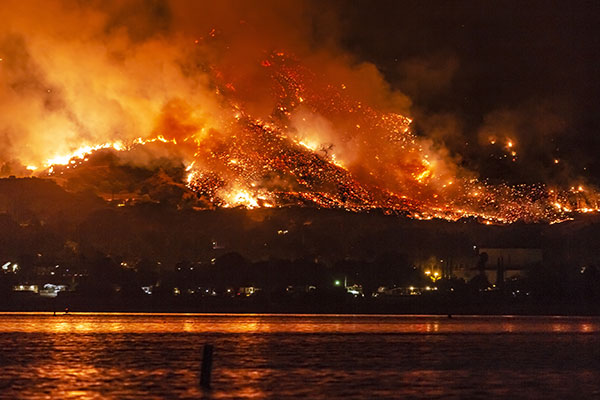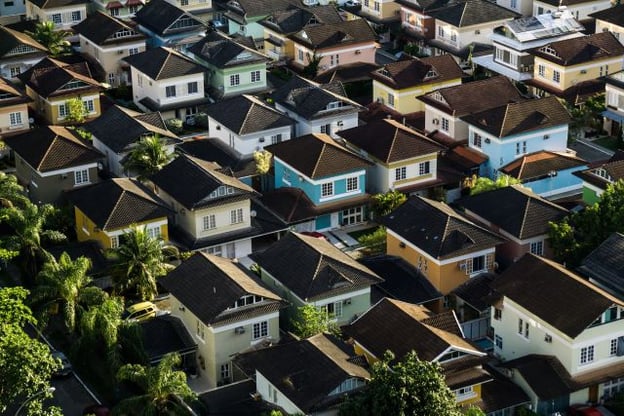Wildfires cause rampaging damage to vegetation and can be a threat to lives and property. California Wildfires are notorious during summers when drought is at extreme levels. The National Drought Mitigation Center (NDMC) data shows that about 37.3 million (or more than 90%) of the California population are affected by drought. Coupled with the fact that 2021 has been the 11th driest year in 127 years and about 49% of the state's land is categorized as being exceptionally dry, wildfires prevalence across the state has been worse.
As of August 18, 2021, ten fires were active, had burned more than a million acres of land, and were far from containment. The California Wildfire map shows that most blazes concentrate in the northern part of California. The largest is the Dixie fire, which lately has posed a threat to Westwood and Janesville communities. Altogether, the Antelope Fire, Monument Fire, McFarland Fire, and Caldor Fire have attracted new evacuation orders this week as they swept near homesteads.
Well, statistics aside, the most critical piece of information you would want to have is how to get ready and protect yourself, loved ones, and property before the fire can reach your area. This guide provides ideas of what to do before, during, and after the wildfires for any year they may happen. Ready? Let's get started!
Preparing Before the Wildfire Arrives in Your Area
1. Protecting Your Home
- Eliminate flammable materials from your home
Collect and dispose of leaves, dry vegetation, or debris at least 30 feet off your home compound. Ensure that your gutters, eaves, decks, and porches are cleared of these materials to prevent embers from kindling the house. You also don't want trees hanging over your chimney or in contact with electrical wires, which can increase the chances of fire catching the house.
- Seal open places the fire can enter through
Use wire mesh to cover areas below decks and patios to deter any further accumulation of combustible materials. Also, check the rooftop for any holes/gaps or debris the embers can use to penetrate the home or light up the fire. If you discover missing or loose shingles or tiles, it's important to call a roofing contractor ASAP for repairs or replacement.
- Take care of combustible products.
If you have propane tanks or stacks of firewood outside the home, they can fuel the fires. Store highly flammable materials in approved fireproof containers and keep them away from areas where they can easily get ignited by sparks or embers.
Maintain your lawn
Dry or unkempt lawns can be fuel for wildfires. Regularly trim and hydrate your lawn and ensure the cuttings, grass, and shrubs disposal is far away from home.
Cover exterior attic vents, soffit vents, and enclose the under-eave with metal wire mesh to deter sparks from penetrating your home.Check that your battery-operated flashlights and radios are in good shape and at an easy-to-access location. Of course, you would want to keep pairs of flesh batteries too.
2. Planning
Have an evacuation plan and make sure everyone knows it. The strategy should stipulate at least two routes from the compound, a common meeting place outside the house, and a communication plan if you get separated during an evacuation.
Assemble an emergency kit. It should include a two-week supply of food, water, essential documents, medicine, and other vital emergency provisions.
Have a first aid kit ready with all up-to-date essentials.
Get in touch with local authorities or fire departments to learn about if your area is at risk and unique plans and arrangements in case an evacuation order comes into effect.
Interact with the homeowners' association (HOA) to learn home designs, landscaping, and materials that make homes more fire-retardant and comply with the association's governing documents.
During the Wildfires
1. What to Expect- Evacuation orders will be released for areas affected.
- Mass media (radios and TVs) will communicate and advise the community about evacuation.
- Fire officials will determine appropriate directions for evacuation depending on factors like fire size, location, and brutality.
- There may be temporary rescue areas for people waiting to travel to safer parts.
2. What to Do: Emergency preparedness
- Prepare and get your family and pets ready for evacuation.
- Check your car is working and pack the emergency kit and other essential goods inside.
- Take furniture inside the house or move away from home, including cushions, mats, and plants in wood-made pots.
- Connect your hoses and water, and if time allows, fill all containers with water, including buckets, pools, tubs, cans, or other vessels. This comes in handy during firefighting.
- Remove drapes and curtains from doors and windows. Make sure all openings are closed and leave the lighting on.
- Don't wait for evacuation enforcement officers after orders have been given. Instead, leave ASAP to give firefighters room to bring in equipment to contain the fire.
What to Do After the Wildfires
- Keep in touch with local fire news and officials to know when it's safe to return home.
- Evaluate your home for any hot spots or fiery remains and put them off with bucket water.
- Check both the interior and exterior of your home for any embers or hidden blazes, including on the rooftop.
- Call 911 if you identify any danger or for assistance.
At RealManage, we help HOAs to flourish transparently through amplified communication and support. Get in touch to learn more.




